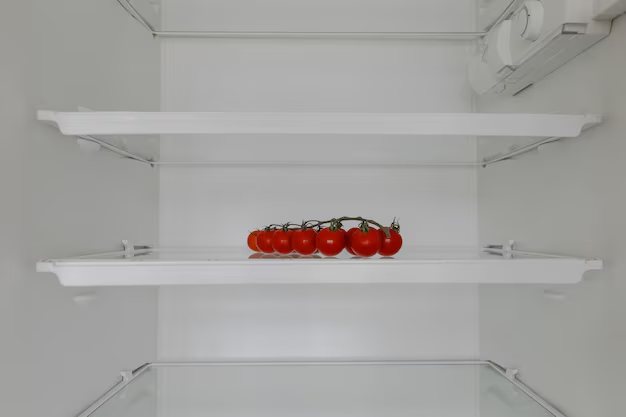What is the Optimal Refrigerator Temperature? Keeping Your Foods Fresh and Safe
Imagine this: You've just made a trip to the grocery store, stocked up on your favorite perishables, and are ready to store them away, ensuring they last as long as possible. But then the thought hits you—what is the ideal temperature for your refrigerator to ensure your food stays fresh without freezing? Understanding the average temperature for a refrigerator is crucial to maintaining food quality and safety.
🥶 Why Refrigerator Temperature Matters
Before diving into specifics, it's essential to grasp why refrigerator temperature is a key element in food safety and longevity. Refrigerators are designed to slow the growth of bacteria, extending the life of perishables such as dairy, meat, and vegetables. However, setting the wrong temperature can spoil these items quickly or even freeze fresh produce, which can ruin the texture and taste.
The Standard Refrigerator Temperature
Recognized universally, the ideal refrigerator temperature is typically between 34°F to 40°F (about 1°C to 4°C). This range is cold enough to slow bacterial growth but not so cold that it freezes food. Codifying this standard is crucial to preserving your groceries while reducing the risk of foodborne illness.
🌡️ How to Set Your Fridge Temperature
Checking Your Current Temperature
Before adjusting, it's important to know the current setting:
- Locate the thermometer or gauge in your refrigerator. Many modern refrigerators come with built-in thermometers.
- If necessary, use an appliance thermometer to get an accurate reading.
Adjusting the Temperature
- If it's too warm (above 40°F/4°C): Lower the temperature setting. This might require adjusting the dial or interface on your refrigerator.
- If it's too cold (below 34°F/1°C): Increase the temperature setting slightly.
Best Practices for Temperature Checks
- Ensure the refrigerator is not overcrowded, which can inhibit air circulation.
- Place the thermometer in the center of the middle shelf for an accurate reading.
- Avoid frequent opening and closing of the door to maintain a steady temperature.
⚖️ Finding the Balance: Refrigerator and Freezer Temperatures
While focusing on the refrigerator, remember that your freezer plays an equally pivotal role. The ideal freezer setting is 0°F (-18°C). Together, these settings create a harmonious environment where perishables are well-preserved.
Maintaining a Balance Between Sections
- Keep the freezer densely packed to maintain cold temperatures efficiently.
- Use separate sections or drawers in the refrigerator for different food categories to prevent cross-contamination.
🥗 Storing Different Types of Food
The internal arrangement also affects your refrigerator's efficiency:
Dairy Products
- Milk and cheese should be stored in the coldest part of the refrigerator, usually the back of the fridge.
Fruits and Vegetables
- Use separate crisper drawers to control humidity levels. Vegetables prefer higher humidity, while fruits do better in lower humidity settings.
Meats and Fish
- Raw meats and fish should be stored securely on the bottom shelf to prevent any drippings that could contaminate other foods.
🧊 Tips to Optimize Your Refrigerator Usage
Organization is Key
- Keep items you use frequently at the front for easy access.
- Label leftovers with dates to ensure nothing gets forgotten and spoils.
Consider Airflow
- Avoid placing warm leftovers immediately in the fridge; let them cool to room temperature first.
- Ensure nothing blocks the air vents within your refrigerator.
Regular Maintenance
- Clean the refrigerator coils bi-annually to ensure the unit runs efficiently.
- Regularly clean and check the door seals to prevent cold air from escaping.
💡 Quick Tips for Refrigerator Efficiency
Here's a handy list to keep your refrigerator at its peak performance:
- ➡️ Position the fridge away from heat sources like ovens or direct sunlight.
- ➡️ Fill gaps with water jugs if the fridge is empty to help maintain temperature.
- ➡️ Set reminders to check temperatures monthly.
🚀 Final Thoughts: Embrace Optimal Settings
Proper refrigerator temperature is a balance of science and art, requiring some attention and regular maintenance. Following the guidelines can ensure your foods stay fresh longer and reduce waste, fostering both economic and environmental benefits.
Keeping an eye on your refrigerator's temperature settings might seem trivial, but doing so maximizes the appliance's efficiency and extends your food's shelf life. Equip yourself with these insights, and you'll enjoy fresher, safer food every time you open your fridge door. With these tips in mind, you're not just preserving food—you're cultivating a healthier, more organized kitchen environment.
